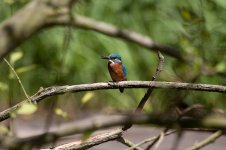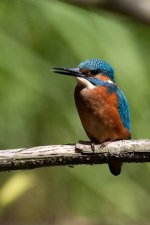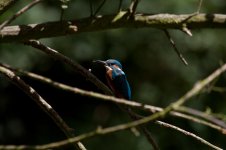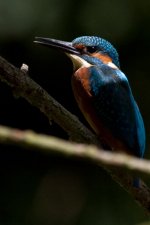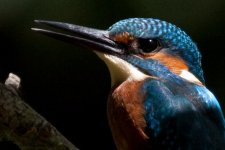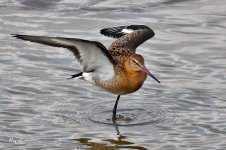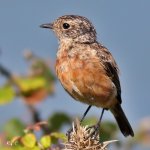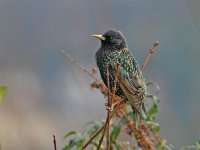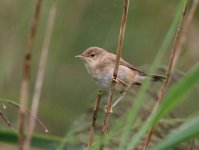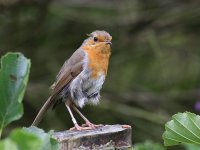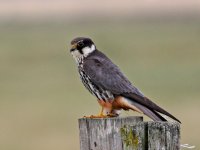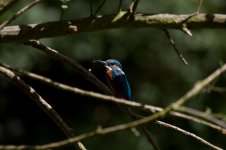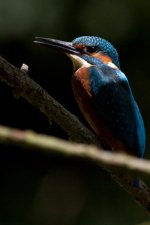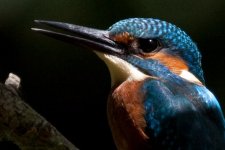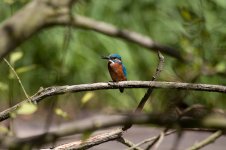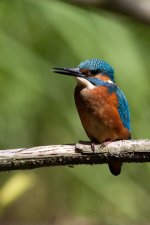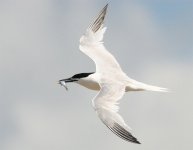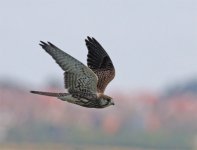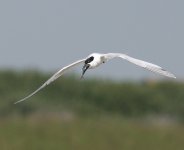John, I have no wish to engage in a willy waving contest about people's 100% crops. If you are using a prime lens and a camera with moderate pixel density and shooting stuff that is moving about little, if at all, then you can indeed get very acceptable quality from 100% crops that will get you a decent 800x533 image or thereabouts. I don't have a prime longer than 85mm, so for me with my 100-400 zoom it is far more demanding to produce a razor sharp image from a 50D when viewing at 100%. When attempting BIF, which is my preference, it is even more difficult to get a useable image when viewed at 100%. The reason is not poor equipment, or poor photographic technique (other than being too far from the subject). It is simply that the magnification factors are pushing the boundaries to the extreme.
Back in post #25 I was talking about using 35mm film (or full frame sensors) as a baseline for extrapolating all things photographic, and proposed a 12x8 print as a yardstick for a "reasonable" level of magnification of 8X. Let's call that our "Gold Standard".
I also said that to generate a 12x8 print from a 1.6X crop body was a magnificaction of 13X. Let's call that our "Silver Standard".
Well, if we do the maths for a few cameras, when cropping to 800x533, let's see what we find. We'll need to agree on a monitor resolution density in order to convert from physical pixels to the image display size in inches. I propose 100 pixels per inch, which is close to one of many standards of 96ppi, but makes the maths a little simpler. So, if you carve out 800x533 pixels from an image, any image, it will display on that monitor at 8x5.33 inches. Let's establish that as our new "print" size. For ease goiing forward let's convert that to mm, giving a displayed image size of 203x135mm. Now let's look at what that means in terms of magnification factors when we crop at 100% from various cameras.
30D
Sensor dimensions = 22.5x15mm, 3504x2336 pixels.
A crop of 800x533 from that camera uses an area of the sensor equal to 5.14x3.42mm
The magnification factor to get from that crop to our 8x5.33" display is 39X.
That is 5X greater than our "Gold Standard".
40D
Sensor dimensions = 22.2x14.8mm, 3888x2592 pixels.
A crop of 800x533 from that camera uses an area of the sensor equal to 4.57x2.88mm
The magnification factor to get from that crop to our 8x5.33" display is 44X.
That is 5.5X greater than our "Gold Standard".
50D
Sensor dimensions = 22.3x14.9mm, 4752x3168 pixels.
A crop of 800x533 from that camera uses an area of the sensor equal to 3.75x2.50mm
The magnification factor to get from that crop to our 8x5.33" display is 54X.
That is a whopping 6.75X greater than our "Gold Standard".
1D3
Sensor dimensions = 28.7x18.7mm, 3888x2592 pixels.
A crop of 800x533 from that camera uses an area of the sensor equal to 5.91x3.85mm (That's 2.43X larger in area than an 800x533 crop from a 50D)
The magnification factor to get from that crop to our 8x5.33" display is 34X.
That is 4.25X greater than our "Gold Standard".
So, as you can see, a 100% crop from a 50D is far more punishing/ambitious/demanding than a 100% crop from a 40D, which in turn is more demanding that a 100% crop from a 30D (or 5D2), which is more demanding than a 100% crop from a 1D3. Also, even with the most lenient of those crops, you are still looking at image magnification factors that are over 4X greater than our "Gold Standard".
To put it another way, if a pro quality print requires the input pixels from our captured image to be rendered at 300ppi, and our screen only displays at a resolution of 100ppi, we should be squeezing input pixels from our captured image into our output pixels on the display at a linear reduction factor of 1/3, or 33% if you prefer. Not 100%. i.e. to produce an 8x5.33 print you would ideally want an image, after cropping, of 2400x1600 pixels, not 800x533.
So, at the end of all that, yes, you may be able to get the quality you desire when cropping to 100%, but the higher your sensor pixel density the more demanding (unrealistic?) that becomes, and your keeper rate is likely to fall. If your target is moving, like a BIF, then the challenge is even greater. Scrape by with a zoom lens with slow AF and, well, good luck.
It is for this reason that I find that for BIF I usually get just as much reach from my 1D3 as from my 50D. All that I accomplish by using the 50D is a more accurate capture of any blur/shake/misfocus, plus more pixel level noise. I rarely end up with more useable feather detail. For static subjects that is another matter altogether, but for BIF.....
p.s. - of course, for BIF, you usually want a high shutter speed, and to combat shake/blur at high magnifications you'll need a very high shutter speed, which will necessitate pushing the ISO, which in turn pushes noise. That is why I find 100% BIF crops from my 50D to be generally unsatisfactory. That is not the fault of the camera. That is my fault for having absolutely lunatic expectations for what my gear and I can deliver. Again, slow it all down for waddlers, waders, floaters and perchers and everything becomes so much easier.
To conclude, I attach an example shot yesterday with my 50D and 100-400 lens, handheld at 400mm, 1/1000, f/6.3, 400 ISO, IS on, no edits. I include the full image, a 50% crop and a 100% crop. In my opinion the 100% crop is very unsatisfactory, and really not useable. The 50% crop would be OK, just, with some tweaking, but as a print that image is only good for a 5x3 or thereabouts. I know my focus is well calibrated. I do not use a filter. I used One Shot AF and fired off several frames, in short bursts, and refocused a few times. This is representative of the batch. No absolute duffers, no clear winners. At 100% it is simply not good enough. I really do not think I could have achieved better results if I had used a tripod or continued shooting for a week. Quite simply, a 100% crop, with my gear, is pushing things too far.
EDIT : for kicks I've thrown in another image of the KF, shot a few moments earlier, this time as a full frame and 50% crop only.




